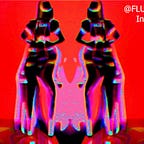The Evolution of Algorithmic Art: A Symphony of Creativity and Technology
Introduction
Art has been an intrinsic part of human expression since time immemorial, reflecting the ideas, emotions, and visions of our civilization. While traditional art forms have long captured our hearts, the digital age ushered in a new era of artistic innovation. At the crossroads of creativity and technology, algorithmic art emerged, revolutionizing the art world with its unique blend of mathematical precision and boundless imagination. In this blog post, we delve into the captivating history of algorithmic art, tracing its roots and exploring the trailblazing artists who harnessed the power of algorithms to create stunning visual masterpieces.
The Early Dawn of Algorithmic Art
The origins of algorithmic art can be traced back to the early 20th century when pioneers like Eadweard Muybridge and Marcel Duchamp experimented with motion and chance in their works. However, it was in the 1960s when the concept of algorithmic art began to take shape as computers became more accessible to artists and mathematicians alike. Profoundly inspired by the potential of code-driven creativity, artists like Vera Molnár and Manfred Mohr started to explore the artistic possibilities of algorithms.
The Golden Age of Algorithmic Art
As technology evolved, so did the sophistication of algorithmic art. The 1980s and 1990s witnessed the golden age of this innovative form, with breakthroughs in computational power, graphics, and programming languages. Pioneering artists like Harold Cohen, using his AARON program, created stunning paintings, blurring the lines between human creativity and artificial intelligence.
The 21st Century Renaissance
With the advent of generative adversarial networks (GANs) and deep learning algorithms, the 21st century witnessed a renaissance in algorithmic art. Artists like Mario Klingemann and Helena Sarin embraced these cutting-edge technologies, producing awe-inspiring artworks that challenged conventional notions of authorship and creativity.
Algorithmic Art: A Collaborative Journey
Algorithmic art is not merely the domain of individual artists; it also thrives in collaborative efforts between humans and machines. Artists today leverage algorithms as powerful tools to augment their creativity, enhancing their ability to explore uncharted artistic territories and deliver thought-provoking, mesmerizing compositions.
Conclusion
The history of algorithmic art is a tale of visionaries who dared to merge art and technology, pushing the boundaries of human expression. From its humble beginnings in the early 20th century to the present-day renaissance, algorithmic art continues to evolve, offering us a glimpse into the harmonious symphony between human creativity and the boundless possibilities of technology. As we embark on an exciting future, one thing remains clear — algorithmic art will persist as a testament to the enduring partnership between human imagination and the digital realm. Through the years, it has shown us that the combination of art and algorithms is an ever-evolving canvas of creativity, proving that the collaboration between man and machine is a powerful force in shaping the artistic landscape of tomorrow.
